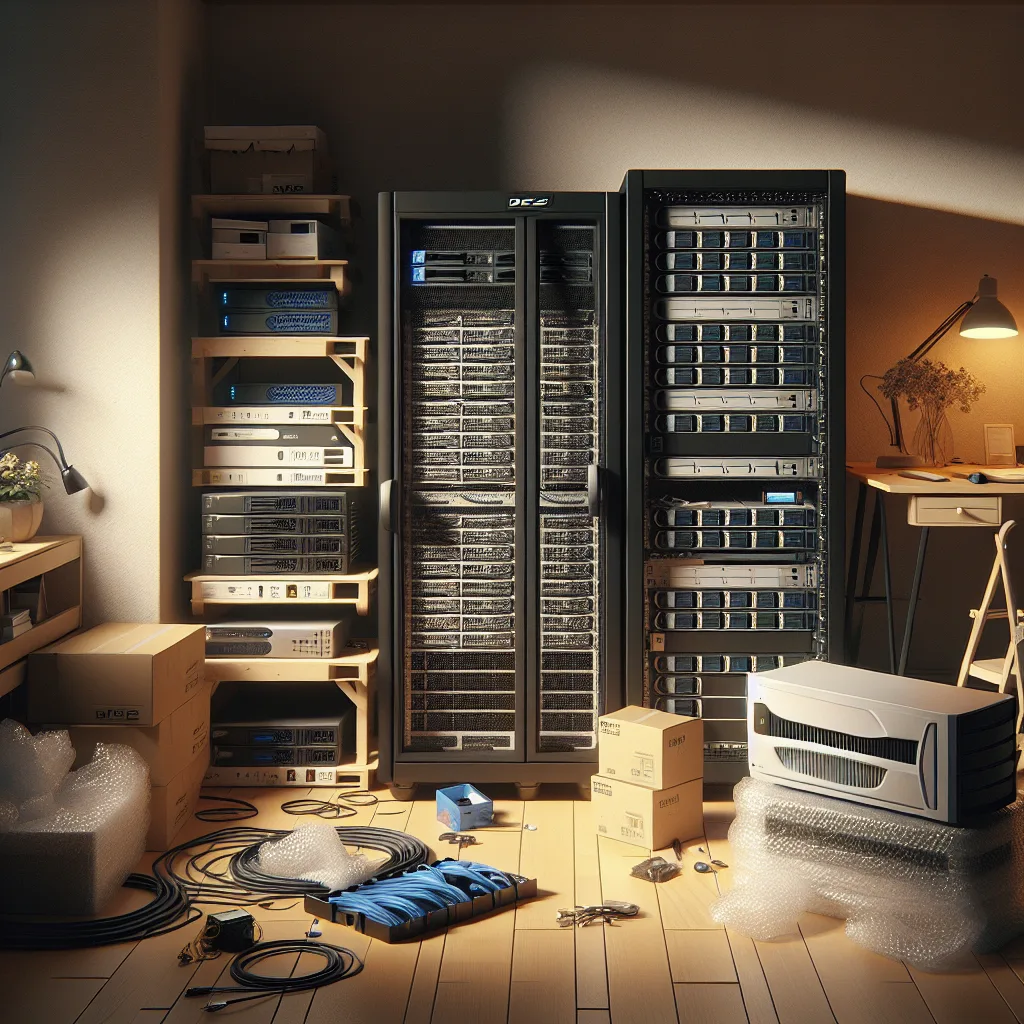It started with a miniature server rack. Now, I’m aiming for my own private cloud. Here’s the plan for my ambitious home lab build.
It starts with an itch.
You know the one. Your current setup, the one you were so proud of a year ago, is starting to feel… small. The fans are spinning a little harder, the storage is getting a little tighter, and your project ideas are getting bigger than your hardware can handle. For me, that feeling has officially hit. My trusty miniature server rack has served me well, but it’s time to plan my next-level home lab build.
I’m not just talking about adding a new hard drive or a bit more RAM. I’m talking about a complete overhaul. My ambition has grown from simply running a few services to building my very own private cloud. It sounds a bit crazy, I know, but that’s the best part of this hobby.
Why Even Attempt a Home Lab Build This Big?
So, why go through all the trouble? It’s a fair question. A big home lab build isn’t just about collecting cool-looking hardware with blinking lights (though that’s definitely a perk). For me, it’s about three things: learning, control, and pure fun.
- Learning: There’s no better way to understand enterprise networking, storage solutions, and virtualization than by getting your hands dirty. I want to learn how to manage a real hypervisor, configure complex network rules, and provision storage like a pro. This is a sandbox where I can break things and learn how to fix them without consequence.
- Control: The idea of a “private cloud” is really about owning my data and services. Instead of relying on third-party services for file storage, media streaming, or project hosting, I can run it all myself. It’s about building a digital space that is truly mine. To learn more about what a private cloud entails, VMware has a great explainer that gets into the technical details.
- The Fun of the Build: Let’s be honest, building things is incredibly satisfying. The challenge of sourcing parts, fitting them together, and slowly bringing a complex system to life is the biggest draw.
Dreaming of Enterprise Gear for My Home Lab
My plan is ambitious. I’ve been spending my evenings scrolling through marketplaces, looking at used enterprise gear. While brand-new equipment is way out of budget, you can get some incredible deals on powerful, second-hand hardware that companies have retired.
I’m dreaming of getting my hands on some proper equipment. I’m talking about things like:
- Dell PowerEdge Servers: These are the workhorses of the data center world. Getting one or two of these would give me a massive boost in computing power for running virtual machines and applications. You can see the kind of servers I’m looking at on the official Dell PowerEdge site.
- NetApp Storage: To build a real private cloud, you need serious storage. NetApp makes dedicated hardware for storing and serving data efficiently. A used NetApp disk shelf could give me more storage than I’d ever realistically need, but “realistically” isn’t the point, is it?
- Proper Networking and Power: I’ll also need to upgrade my networking with a more robust switch and ensure I have clean, reliable power with an uninterruptible power supply (UPS) from a brand like APC.
The Shopping List for My Ambitious Home Lab Build
So what’s the actual plan? It’s time to move beyond dreaming and start listing. Here’s what my initial shopping list looks like for this home lab build:
- Full-Size Server Rack: I’m getting rid of the mini-rack and going for a proper, enclosed rack to house everything cleanly and manage the noise.
- Dell or HPE Servers: I’ll be looking for 2-3 used rack-mounted servers. This will be the core of my compute cluster.
- NetApp Disk Shelf: This is the centerpiece for my storage goals. I’ll connect it to a server running a storage OS like TrueNAS.
- Managed Switch: A 24-port or 48-port managed switch to handle all the network traffic between the servers, storage, and the rest of my home network.
- APC Rack-Mounted UPS: To keep everything running smoothly during power blips and allow for a graceful shutdown during an outage.
It feels like a mountain to climb, but every big project starts with a single step. For me, that step is the plan. The hunt for hardware is officially on, and I couldn’t be more excited to see this vision come to life. This is where the real fun begins. I’ll be sure to share updates as the boxes start arriving and the build gets underway.
